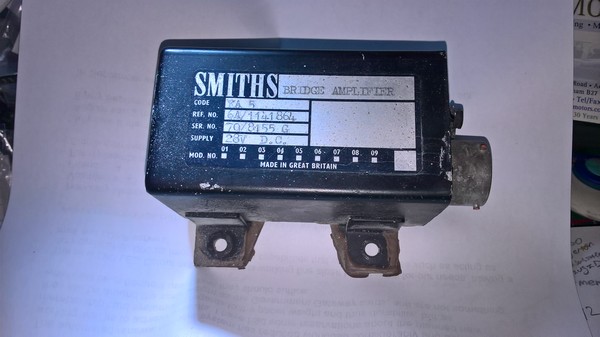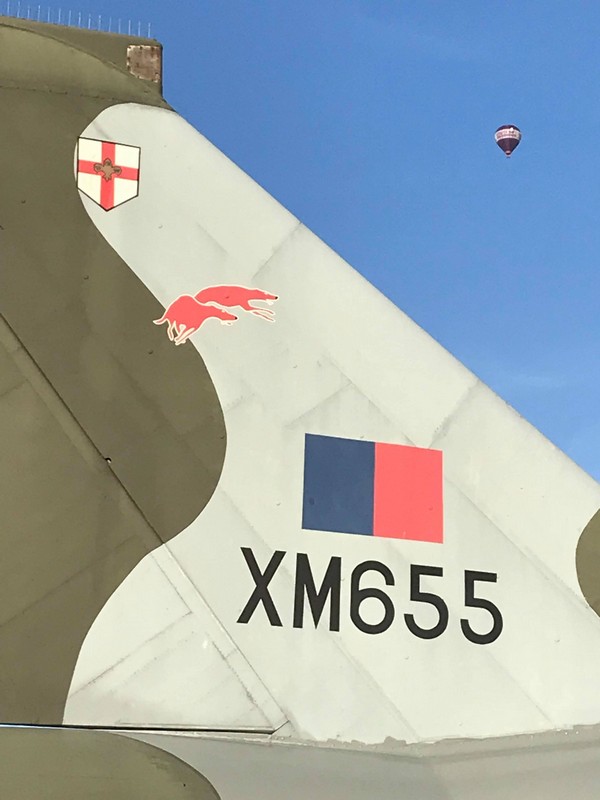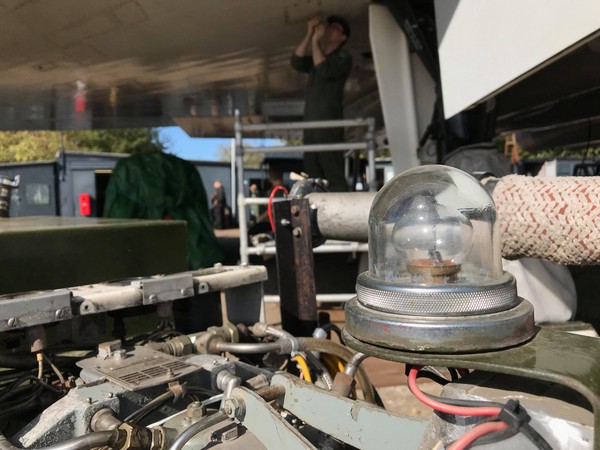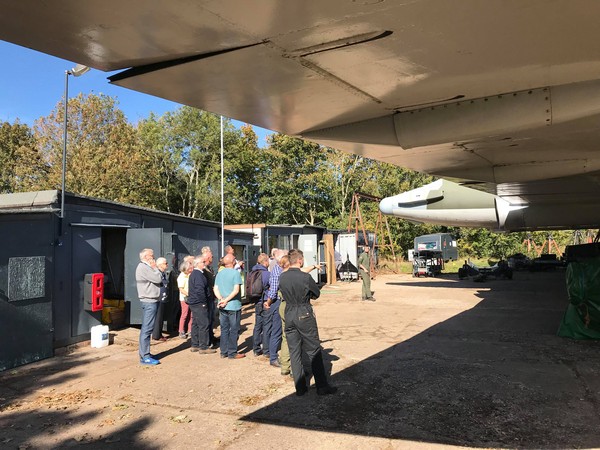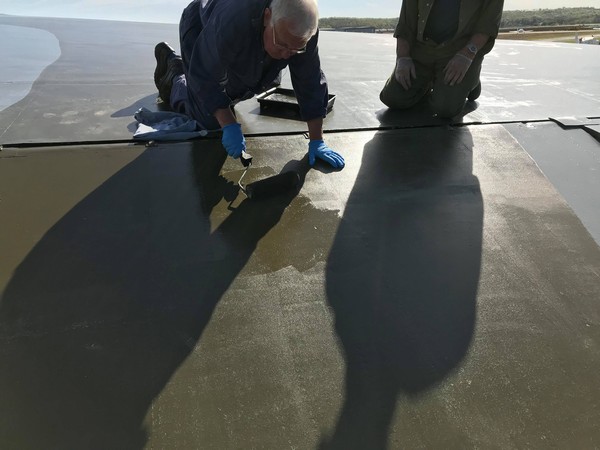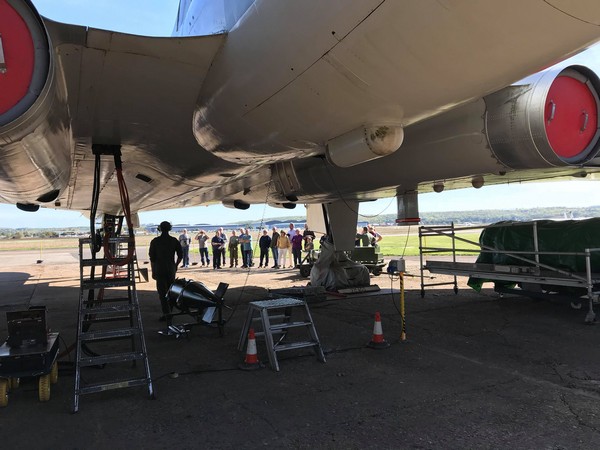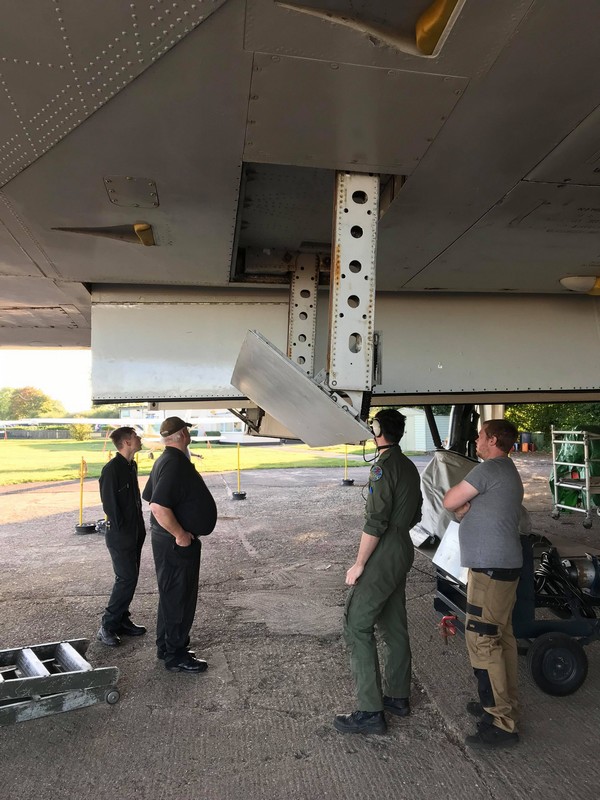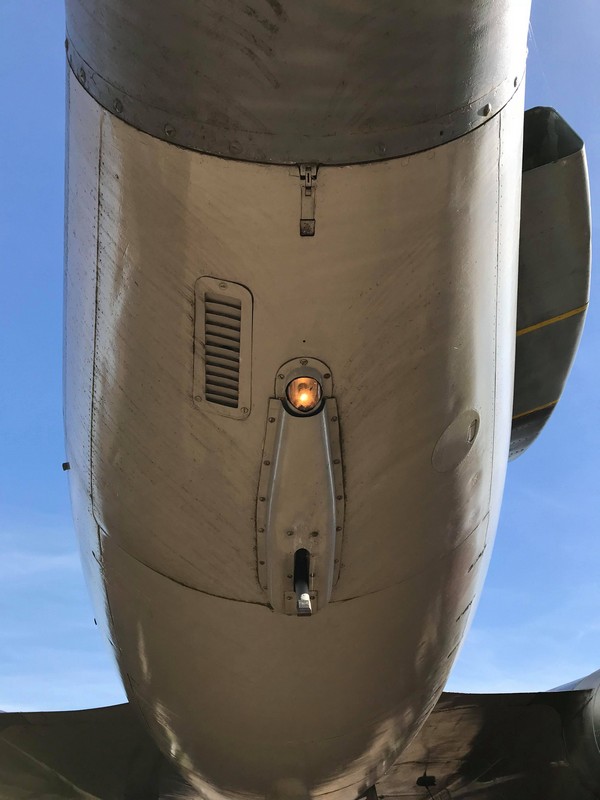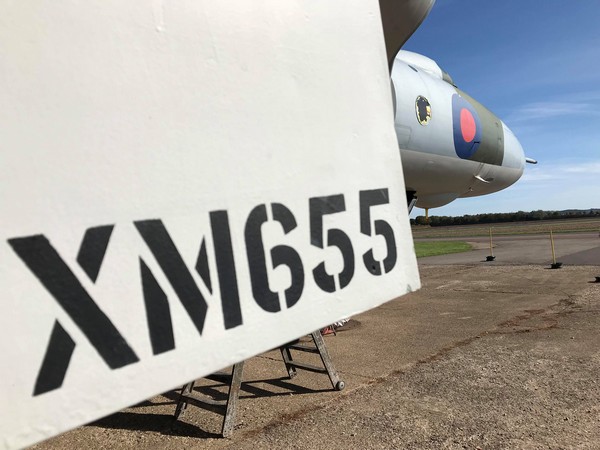A beautiful sunrise at the airfield this Saturday and a chance for some stunning photos

One of the jobs for the day was to replace the bridge amplifier for the fuel contents system. This unit gives a differential reading of the tank content for the capacitive fuel contents system. A basic description of the system is as follows – there is either one or two capacitive strips placed at either end of the tank and these are connected to the bridge amplifier by means of cable junction boxes. A capacitance is set in the bridge amplifier and as the contents of the tank vary, the capacitance of the strips change and this is compared by a bridge circuit in the amplifier, creating a variable voltage that is sent to the aircrafts fuel contents indicators. This information can be shown individually for each of the tanks or summed together to show the group contents (see below for a picture of the bridge amplifier that was removed). As with a lot of equipment in a Vulcan, these can be installed in almost any available space and we finally found these in the AAPP bay so we were able to replace the faulty unit. Following testing we were able to confirm that good readings were being received at the fuel gauges and group contents returned to normal operation.
A special moment occurred when the Houchin provided 28v to the aircraft for the first time in a long while following reinstallation of the TRU last week. In fact, the TRU worked on both occasions and was used to power the aircraft for the systems demo for our group visit of the Usk Valley Classic Car Club and the Taffmog Morgan Club of South Wales. This now means that the Hooch is providing both 28v and 200v to the aircraft.
We also tried to run out the airbrakes on the normal motor which has proved problematic over the last few months but, unfortunately, to no avail. Work on this issue will continue over the coming week or two.
We are currently in the process of re-instating the RadAlt 7. This system was used to accurately determine the height of the aircraft above the ground. The unit was originally removed from the aircraft prior to delivery to Wellesbourne as it was still in use by other aircraft types still in service with the RAF. The header unit was still in place in the rear of the cockpit but the transmitter, mounting tray and the tx and rx (transmitter and receiver) horn units had been removed – the last two items had been replaced with equivalent scrap units so that no gap was left in the airframe. The tray was reinstalled and then the transmitter which proved a bit awkward having to work through the small apertures left in the airframe after the removal of the tx and rx horns. We still have to find some other items to complete the re-installation but the work we have done now leaves some space on the shelves for other worthy parts!
Photos courtesy of Matt, Steve and Tim.


